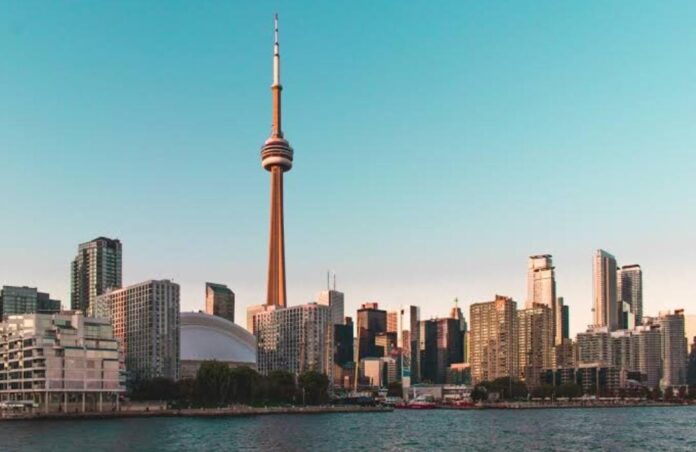Ms Anvita Pandey
Toronto: Canada’s response to the looming US tariff war is not just a matter of domestic economic policy; it is a test of its global diplomatic strategy. The trade standoff initiated by former US President Donald Trump has exposed Canada’s vulnerabilities—its overdependence on the American market, its sluggish economic adaptability, and its declining global influence. Yet, instead of recalibrating its economic model, Canada is embracing an aggressive retaliatory approach, a move that could further isolate it on the world stage. This strategic misstep has broader implications, particularly for India, which finds itself in a unique position to leverage the shifting trade dynamics. But will Canada recognize its mistakes in time to salvage its economy, or will it continue down the path of economic self-destruction?
The core of Canada’s economic dilemma lies in its overwhelming reliance on the United States. Canada exports around $421 billion in goods and services to its southern neighbor, constituting nearly 20% of its total $2 trillion economy. The US, in contrast, imports the same amount from Canada, which accounts for a mere 1.4% of its GDP. This asymmetry means that any disruption in trade will have a disproportionately severe impact on Canada. Trump’s tariff threats are not just political rhetoric; they are calculated measures designed to exploit Canada’s economic weaknesses. Instead of acknowledging this reality and pursuing strategic diversification, Canadian leaders have opted for a politically charged retaliation—one that will do little to alter America’s economic trajectory but could push Canada into an economic freefall.
Prime Minister Justin Trudeau and Conservative Leader Pierre Poilievre have both vowed to impose reciprocal tariffs on American goods, targeting products like beer, wine, food, appliances, and critical minerals. This “dollar-for-dollar” retaliation may sound like a demonstration of economic sovereignty, but in practice, it is an act of economic self-sabotage. Canada’s weak currency—already at its lowest since 2016—suggests that global investors have little faith in its ability to navigate this crisis. A full-fledged trade war could shrink Canada’s GDP by as much as 5%, according to FHN Financial, a level of economic devastation that could trigger a recession, widespread job losses, and investor flight.
What makes Canada’s approach even more reckless is its failure to build alternative trade partnerships before escalating tensions with its largest economic partner. Unlike China, which has systematically diversified its trade portfolio, Canada remains overwhelmingly dependent on the US for its exports. While the Comprehensive and Progressive Agreement for Trans-Pacific Partnership (CPTPP) was supposed to open up new markets, Canada has not effectively capitalized on these opportunities. Its tensions with India, one of the world’s fastest-growing economies, further highlight its diplomatic miscalculations. Instead of strengthening trade ties with India, Canada has strained its relations through political provocations, particularly regarding its stance on the Khalistan issue.
India, with its rapidly expanding economy and increasing influence in global trade, represents the kind of strategic partnership that Canada desperately needs. However, Trudeau’s government has repeatedly mishandled this relationship, prioritizing domestic political calculations over economic pragmatism. By allowing separatist elements to dictate its diplomatic posture, Canada has alienated India—a country that could serve as a key counterbalance to its trade dependence on the US. The consequences of this miscalculation are clear: while Canada scrambles to respond to Trump’s trade war, it finds itself with few allies willing to step in and mitigate its economic fallout.
India, on the other hand, stands at a crucial juncture where it can benefit from the global realignment of trade relationships. As Western economies, including Canada, face economic uncertainty, India has the opportunity to position itself as a reliable and attractive alternative for global trade partnerships. India’s booming manufacturing sector, growing consumer base, and strategic geographic position make it an ideal partner for countries looking to hedge against economic instability in North America and Europe.
For India, the key challenge is ensuring that it does not get caught in the crossfire of Western economic turbulence. While Canada’s economic decline may not directly impact India’s trade significantly, the broader implications of North American trade instability could create ripple effects in global markets. The key for India is to adopt a calculated approach—offering itself as a stable trade partner while avoiding entanglement in the retaliatory trade policies that Canada is embracing.
India can play a crucial role by capitalizing on Canada’s economic desperation. If Canada realizes the folly of its current diplomatic stance and seeks to mend ties with India, New Delhi should negotiate from a position of strength. Trade agreements should be structured to ensure that India gains favorable terms in sectors like technology, pharmaceuticals, and infrastructure. Additionally, India must push for stronger guarantees on investment security, ensuring that Canadian businesses do not operate under the same politically volatile conditions that have previously strained bilateral relations.
The broader lesson from Canada’s predicament is that economic diversification is not just a strategy—it is a necessity. Canada’s overreliance on the US has made it vulnerable, and its reactionary trade policies will only deepen its crisis. If Canada fails to course-correct, it risks becoming an economic cautionary tale—a country that had every opportunity to adapt but instead chose political posturing over practical reform.
For India, the path forward is clear. As Western economies struggle with internal instability and trade wars, India must position itself as a center of economic resilience. By strengthening its trade policies, negotiating from a position of strength, and avoiding the retaliatory missteps that have defined Canada’s response, India can emerge as a key player in the new global trade order. While Canada flounders, India has the opportunity to lead. The question is whether Canada will recognize its mistakes in time—or whether it will be too late to recover.


